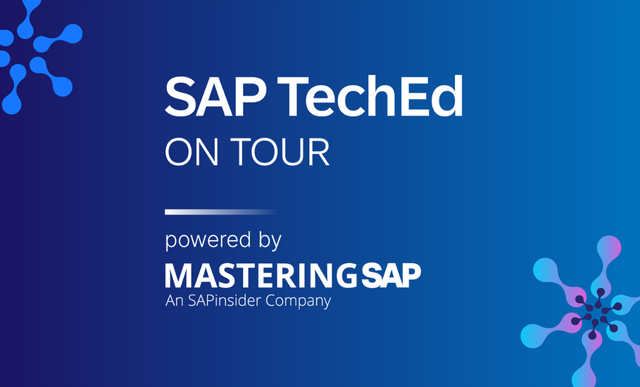Q&A Recap: Building a Case for SAP S/4HANA
Top Experts from SAP Answer Customers' Questions About Moving to this Transformational Technology
Q: What is SAP HANA and will it replace SAP Business Warehouse?
Lance Holbert: SAP HANA is the database and platform on which all SAP technology innovations will be based. It is an in-memory database, meaning it has rapid query response times and dramatic performance improvements compared with traditional relational databases. It will complement SAP Business Warehouse (SAP BW), which can now be used for more strategic modeling, planning, and complicated analytics needs.
Q: What is a best-case scenario to turn a customer’s head toward SAP HANA?
Lance Holbert: Finance is definitely a compelling use case in that we can address longstanding challenges in the finance and accounting space with the new solution areas. This has been our most common request. SAP HANA is also used in advanced reporting and analytics contexts in which detailed line-item volume had been preventing rapid insights.
Q: Should a company not yet on SAP Business Suite on SAP HANA go straight to SAP S/4HANA?
Lance Holbert: There are many paths to SAP S/4HANA, and creating a new instance (especially in the cloud) is a low barrier for entry into SAP S/4HANA. You do not need to have a previous SAP instance to move directly onto SAP S/4HANA.
Explore related questions
Q: What are the requirements for moving to SAP S/4HANA?
Carl Dubler: If you want to convert an existing SAP ERP instance to SAP S/4HANA, start with SAP ERP Central Component (SAP ECC) 6.0, any enhancement package. Before the November 2015 update to SAP S/4HANA, you needed enhancement package 7, but that is no longer the case. You can be on any enhancement package and use SUM to go to the new code. (And of course the database needs to be SAP HANA as well.) There are a number of options; visit https://scn.sap.com/docs/DOC-64980 for more.
Q: If a company wants to move conservatively to SAP S/4HANA, should it upgrade to the latest SAP ECC 6.0 enhancement package, using SAP HANA as the database, and then upgrade to SAP S/4HANA?
Lance Holbert: You are describing a situation of moving SAP ECC from another database to SAP HANA, which is called SAP Business Suite on SAP HANA. This is actually the lion’s share of the work, compared with the relatively simple step of moving from SAP Business Suite on SAP HANA to SAP S/4HANA. You are most of the way there once you get SAP HANA in place. The business process remains mostly the same, except for the enhancements you get with the SAP Fiori interfaces, the simplified table structures, and so on.
It is generally a low-risk, low-disruption approach if you are planning an “apples-to-apples” migration. Of course, you can also introduce enhanced business processes along the way and use the migration as a transformation program as well. We have all the pros and cons and risk considerations in mind when SAP Service and Support gets involved to help plan these migrations and establish your custom roadmap to SAP S/4HANA.
Q: When would you recommend Central Finance to a customer buying SAP S/4HANA Finance?
Lance Holbert: There are many scenarios in which Central Finance would be useful. The most common use case we have seen from our customers is moving to a consolidated book of financials from a complicated, multi-ERP scenario. It allows for the creation of a central ledger to review the entire company’s financials at the line-item level, and it helps avoid touching multiple ERP instances to close the books, perform a consolidation, and do reporting and analysis, for example. Central Finance also helps establish a new set of business structures that would more accurately represent the business than perhaps what the legacy systems show independently.
Q: How does SAP support a cloud deployment of SAP S/4HANA?
Carl Dubler: You can run SAP S/4HANA on a private could (SAP HANA Enterprise Cloud) or public cloud versions, which have a more focused scope than on premise, and like with any public cloud solution there are limits to how you can customize and extend.
Q: Are SAP’s cloud applications on an SAP HANA platform?
Lance Holbert: A key aspect of our roadmap is to power all of our solutions using SAP S/4HANA as the digital core. Each of these will be integrated into the SAP HANA core, in which data from these applications will flow directly through SAP HANA, even with the option of cloud application integration to on-premise or private managed cloud implementations of SAP S/4HANA.
Q: We are on SAP ECC 6.0 with an industry solution for oil and gas. How are industry solutions supported in SAP S/4HANA?
Carl Dubler: As of the November 2015 update, SAP S/4HANA supports the following industries: chemicals, life sciences, wholesale, high tech, mining, and industrial machinery and components (IM&C). Plus, we added capability to automotive, aerospace and defense, and mill products.
Q: What are the major quantifiable benefits of going to SAP HANA?
Lance Holbert: It can be different for each customer depending on their situation, industry, and current pain points. SAP has a value management database of quantifiable value drivers with which we can quickly identify what metrics apply to your situation. The idea is to introduce tangible ROI, as well as qualitative metrics such as productivity improvements, reduction of manual efforts, and even employee engagement.
Q: What types of benefits have SAP S/4HANA customers experienced so far?
Lance Holbert: Here are some examples from recent customers with which I’ve been working:
- Real-time analytics and end-to-end visibility in operations, HR, sales, and inventory
- Use as a platform for master data reorganization
- Standardization and harmonization of multiple legacy ERP systems
- Increased focus on statutory and regulatory compliance
- Predictive profitability
- IPO readiness










